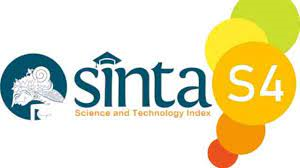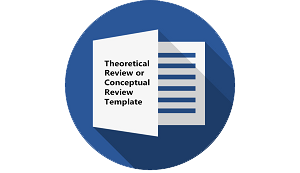Team Game Tournament Learning Model to Improve the Students’ Speaking Achievement
DOI:
https://doi.org/10.30957/ijoltl.v5i3.637Keywords:
Team Game Tournament, action research, learning modelAbstract
This study aims to find out whether the implementation of TGT can improve students’ speaking ability and activity in grade IX-D of MTs Negeri 2 Kudus. This is a classroom action research. This research was carried out in several cycles. Each cycle consists of planning, implementing, observing, and reflecting. The variables of this study comprise of student achievement and teacher activity. The results showed the teacher's performance increased according to the criteria on the indicator, which was shown in cycle I was sufficient and cycle II to be good. Student activities during learning are very good, in the first cycle with a percentage of 66.67% and the second cycle with a percentage of 93.33%. The students’ speaking achievement is shown by the average of students’ evaluation result in the first cycle (6.85) and the second cycle is 8.63. In the first cycle the students who finished learning were 14 students or 46.67% and those who did not complete as many as 16 students or 53.33%, and classical learning completeness 46.67%. In cycle II there were 30 students who had finished learning and none of them had finished learning, and classical learning completeness was 100.00%. This means that the results of the second cycle evaluation are better (increased) than the first cycle and need not be continued in the next cycle. The learning model of Team Game Tournament (TGT) is relatively high, reaching 81.73%.
Downloads
References
Arikunto, S., Suhardjono, & Supardi. (2006). Penelitian Tindakan Kelas. Jakarta: PT Bumi Aksara.
Bateman, B. (1981). Reviews: The Cambridge Guide to Second Language Teacher Education. The Modern Language Journal, 65(2), 203–240. https://doi.org/10.1111/j.1540-4781.1981.tb00975.x
Brown, H. D. (2018). Language Assessment: Principles and Classroom Practices. In Pearson Education, Inc. (1st ed.). Longman. www.longman.com
Celce-Murcia, M., Brinton, D., & Snow, M. A. (2014). Teaching English as a second or foreign language (p. 706).
Depdiknas. (2003). Standar Kompetensi Mata Pelajaran Bahasa Inggris Sekolah Menengah Pertama dan Madrasah Tsanawiyah. Jakarta: Direktorat Pendidkan Dasar dan Menengah.
Depdiknas. (2010). Pedoman Penulisan. Buku Bahasa Inggris SMP/SMA. Naskah pada Pusat Perbukuan. Jakarta: Pusat Perbukuan Depdiknas.
Dykstra, G. (n.d.). Eliciting Language Practice in Writing -.
Ferrance, E. (2000). Action Research (1st ed.). Brown University.
Flowerdew, J. (2012). English for Research Publication Purposes. In The Handbook of English for Specific Purposes (pp. 301–321). https://doi.org/10.1002/9781118339855.ch16
Fueyo, V., & Koorland, M. A. (2007). Teacher as researcher: A synonym for professionalism. Journal of Teacher Education, 48(5), 336-338.
Gie, T. L. (2002). Terampil Mengarang. Yogyakarta: Balai Pustaka.
Gifford, C., & Huff, J. (1979). Using an Isntructional Management System to Teach Writing Skills. NASSP Bulletin, 1, 1–476. https://doi.org/10.1017/CBO9781107415324.004
Hammond, J. e. (2012). English for Social Purposes: a Handbook for teachers of Adult Literacy. Sydney: NCELTER.
Harmer, J. (2008). How to Teach English. London: Longman.
Herlinawati, & Hidayati. (2014). Picture Inductive Word Model (PWIM): Improving Students’ Ability in Writing a Descriptive Paragraph. ELT-Lectura, 1(2), 9–14. https://doi.org/10.31849/elt-lectura.v1i2.452
Joyce, B., & Weil, M. (2009). Models of Teaching, Second Edition. New Jersey: Prentice Hall Inc.
Klein, S. R. (2012). Action Research Methods: Plain and Simple (1st ed.). Palgrave Macmillan US.
Novia, F. (2015). Promoting Picture Word Inductive Model ( PWIM ) to Develop Students ’ Writing Skill. Premise Journal, 4(1).
Rust, F., & Clark, C. (2007). How to do action research in your classroom; lessons from the teachers network leadership institute.
Suparno, Y. M. (2002). Keterampilan Dasar menulis. Jakarta: Universitas Terbuka.
Suriamiharja, A. (2007). Dasar-Dasar Keterampilan Menulis. Bandung: Angkasa.
Tarigan, H. G. (2008). Membaca Sebagai Suatu Keterampilan Berbahasa. Bandung: Angkasa.
Thompson, P. (2013). The Handbook of English for Specific Purposes. In B. Paltridge & S. Starfield (Eds.), The Handbook of English for Specific Purposes (1st ed.). A John Wiley & Sons, Ltd., Publication. https://doi.org/10.1002/9781118339855.ch15
Downloads
Published
How to Cite
Issue
Section
License
Authors who publish with this journal agree to the following terms:
- Authors retain copyright and grant the journal right of first publication with the work simultaneously licensed under a Creative Commons Attribution-ShareAlike 4.0 International License that allows others to share the work with an acknowledgement of the work's authorship and initial publication in this journal.
- Authors are able to enter into separate, additional contractual arrangements for the non-exclusive distribution of the journal's published version of the work (e.g., post it to an institutional repository or publish it in a book), with an acknowledgement of its initial publication in this journal.
- Authors are permitted and encouraged to post their work online (e.g., in institutional repositories or on their website) prior to and during the submission process, as it can lead to productive exchanges, as well as earlier and greater citation of published work (See The Effect of Open Access).












